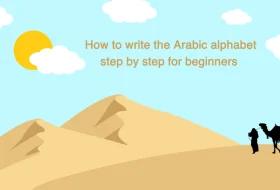Welcome to your first step towards perfect Quranic recitation. This complete guide to Tajweed for beginners makes learning accessible to everyone. We’ll walk you through the fundamental rules with clear English explanations and translations, helping you build a strong foundation. This structured approach paves the way for you to recite the Quran correctly and confidently, deepening your connection to its divine message.
What is Tajweed?
A solid grasp of Tajweed is the first step for Quran reading for beginners. This essential science provides muslims with the rules for correct recitation, ensuring each letter is pronounced from its precise point of articulation. The primary goal is to protect the divine text’s meaning, as even a minor error can alter a word’s significance. By learning basic Tajweed rules, a reciter can maintain the correct rhythm, preserve the authentic message, and follow the tradition of the Prophet Muhammad (peace be upon him), achieving both beauty and accuracy in their recitation.
This profound impact reflects the undeniable importance of Tajweed for beginners in every Muslim’s spiritual journey.
Why Should Beginners Learn Tajweed?
For those beginning their journey with the Quran, learning proper recitation is fundamental. Tajweed for Beginners provides the essential framework to approach the divine text with confidence and precision.
Practical Benefits of Learning Tajweed
- Ensures Recitation Accuracy
Mastering the correct pronunciation prevents alterations in meaning, making it crucial to understand simple Tajweed rules from the start.
- Safeguards Prayer Validity
Proper recitation is fundamental to Salah, and the availability of resources to learn Tajweed in English makes this essential knowledge accessible to non-Arabic speakers worldwide.
- Prevents Meaning Alteration
Through systematic practice, students can avoid common errors that could change the Quran’s intended message.
Spiritual Dimensions
- Deepens Divine Connection
The process of learning cultivates a stronger bond with Allah through mindful engagement with His words.
- Enhances Prayer Focus
Implementing the rules increases khushu’ and concentration during worship, transforming the spiritual experience.
- Fulfills Religious Duty
Correct recitation represents both a personal achievement and a religious obligation fulfilled.
Additional Advantages
- Strengthens Memorization
Rhythmic patterns aid long-term retention of Quranic verses.
- Builds Recitation Confidence
Proper training empowers students to recite publicly with certainty and poise.
- Preserves Islamic Tradition
This practice maintains the authentic recitation method passed down through generations.
Noorani Qaida: The Essential First Step for Tajweed for Beginners
The Noorani Qaida serves as the fundamental primer for anyone starting their journey in Quranic recitation. This foundational textbook offers a systematic path to mastering the Arabic alphabet and lays the groundwork for proper pronunciation. For those seeking to learn the Quran for beginners, Noorani Qaida for Tajweed provides an accessible entry point, breaking down complex rules into manageable lessons. It is widely recommended by leading Islamic educational centers, such as Ayat Institute, for students of all ages, beginning with no prior Arabic knowledge.
Core Curriculum of Noorani Qaida
Arabic Phonetics Mastery
- Students develop proper articulation of each Arabic letter from its correct origin point
- Progressive exercises build from individual letters to combined syllables and words
Foundation for Basic Tajweed Rules
- Introduces essential elongation (Madd) principles and vowel sounds
- Demonstrates practical application through structured repetition
- Establishes proper pronunciation habits from the earliest stages
Structured Learning Pathway
- Gradually advances from letter recognition to complete word formation
- Builds confidence through achievable milestones
- Creates a solid foundation for direct Quranic reading
Integration with Tajweed Studies
Gateway to Advanced Recitation,
The Noorani Qaida establishes the essential groundwork that enables students to progress to full Tajweed for beginners studies with confidence.
Practical Implementation
While Tajweed represents the theoretical rules of recitation, the Qaida serves as the hands-on tool that brings these rules to life through immediate application.
Recitation Readiness
By completing the Noorani Qaida, students develop the necessary skills to approach the Quran itself with accurate pronunciation and basic tonal awareness, fully prepared to learn Tajweed in English or Arabic through more advanced studies.
Top 3 Basic Tajweed Rules for Beginners
For English-speaking Muslims beginning their Quranic journey, knowing how to learn Tajweed easily is key to building a strong foundation. This guide breaks down the essential rules that form the core of proper recitation. Following a structured approach makes the process accessible and achievable for everyone.
1. Understanding Noon Sakinah and Tanween
These fundamental simple Tajweed rules govern the pronunciation of the ‘n’ sound in different contexts:
- Izhaar (Clear Pronunciation): Pronounce clearly before throat letters (ء, ه, ع, ح, غ, خ)
- Idghaam (Merging): Merge the sound with the following letters in “يَرْمُلُون”
- Ikhfaa (Concealment): Hide the sound with nasalization for 15 specific letters
- Iqlab (Conversion): Change to ‘m’ sound before bāʾ (ب)
2. Essential Madd Rules
The art of proper elongation forms the melody of Quranic recitation:
- Recognize Madd letters (ا, و, ي) in various positions
- Understand when to extend vowel sounds naturally
- Practice the basic elongations that occur in daily recitation
3. Pronouncing Similar Arabic Letters Correctly
Developing clear articulation is crucial for proper Quranic recitation:
- Identify and practice commonly confused letter pairs
- Focus on one articulation point at a time
- Use listening exercises to train your ear
- Record and compare your pronunciation
By following this tajweed for beginners step-by-step methodology and focusing on proper technique, students can progress steadily without feeling overwhelmed. To master similar-sounding letters, practice these common pairs:
- ق (Qaf) vs. ك (Kaf) as in قَلْب (heart) vs. كَلْب (dog)
- ت (Ta) vs. ط (Taa) as in تِين (fig) vs. طِين (clay)
- ذ (Dhal) vs. ظ (Dhaa) as in ذَهَب (gold) vs. ظَهَر (appeared)
- س (Seen) vs. ص (Sad) as in سَلَّم (greeted) vs. صَلَّى (prayed)
The key is consistent practice and celebrating small victories along this beautiful journey of connecting with the words of Allah.
Your Practical Guide to Learning Tajweed for beginners in ayat institute
- Start with a Free Trial: Experience our teaching method at no cost
- One-on-One Online Classes: Personalized sessions via Zoom/Skype
- Certified Teachers: Al-Azhar graduates with Ijazah certification
- 24/7 Flexible Scheduling: Choose your preferred class time
- Structured Curriculum: From Noorani Qaida to advanced Tajweed
- Teacher Replacement Guarantee: Immediate change if unsatisfied
- Ijazah Goal: Obtain certification upon mastery
- For All Levels: Suitable for beginners and advanced students
- Native Arabic Speakers: Learn correct pronunciation from Egyptians
In conclusion, Tajweed for beginners remains the solid foundation for mastering the recitation of the Holy Quran. In this comprehensive guide, we have provided you with the most important practical rules and actionable steps to begin your journey with confidence.
Since learning Tajweed with a specialized mentor makes a significant difference, the Comprehensive Tajweed Course at Ayat Institute offers you the ideal environment for correct learning. With expert instructors and a systematic methodology, your recitation will smoothly progress from one level to the next.
The next step is in your hands… Start your Quranic journey correctly today.
[Enroll Now ]
FAQs
Can children learn Tajweed? Absolutely! Our Tajweed for beginners program is specially designed for children, making learning engaging and accessible through interactive methods suitable for their age.
I have no Arabic background. Can I still learn?
Yes! Our Tajweed for beginners course starts from scratch, teaching the Arabic alphabet and basic rules step by step. Many of our successful students began with no prior Arabic knowledge.
How to read Quran with Tajweed for beginners?
The best way to start your journey of Tajweed for beginners is by following these steps:
- Begin with a qualified teacher who can correct your pronunciation.
- Master the Arabic alphabet and their correct articulation points (Makharij).
- Learn to apply the basic rules practically, starting with short surahs.
- Practice consistently with listening and repetition.
How long does it take to learn Tajweed?
The time it takes varies, but for Tajweed for beginners, you can expect to grasp the foundational rules and apply them to your recitation within a few months of consistent study and practice. Achieving a strong, confident command typically unfolds over a longer period of dedicated learning. Our structured Tajweed for beginners program is designed to make this journey efficient and effective.
What are the basic rules of Tajweed for beginners?
The essential basic Tajweed rules every beginner should focus on are:
- Rules of Noon Sakinah & Tanween (Izhaar, Idghaam, Ikhfaa’, and Iqlab).
- Rules of Meem Sakinah (Idghaam, Ikhfaa, and Izhaar).
- Basic Rules of Madd (Lengthening) to understand vowel elongation.
- Correct Pronunciation of Similar Letters (like ق vs. ك, and ت vs. ط).
Mastering these basic Tajweed rules forms the core with our Tajweed for beginners curriculum.















